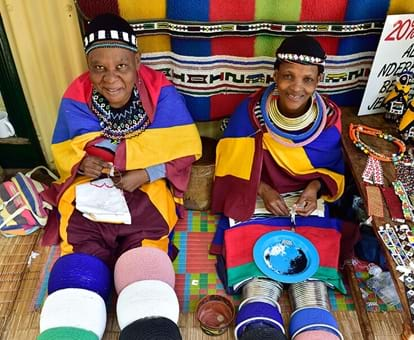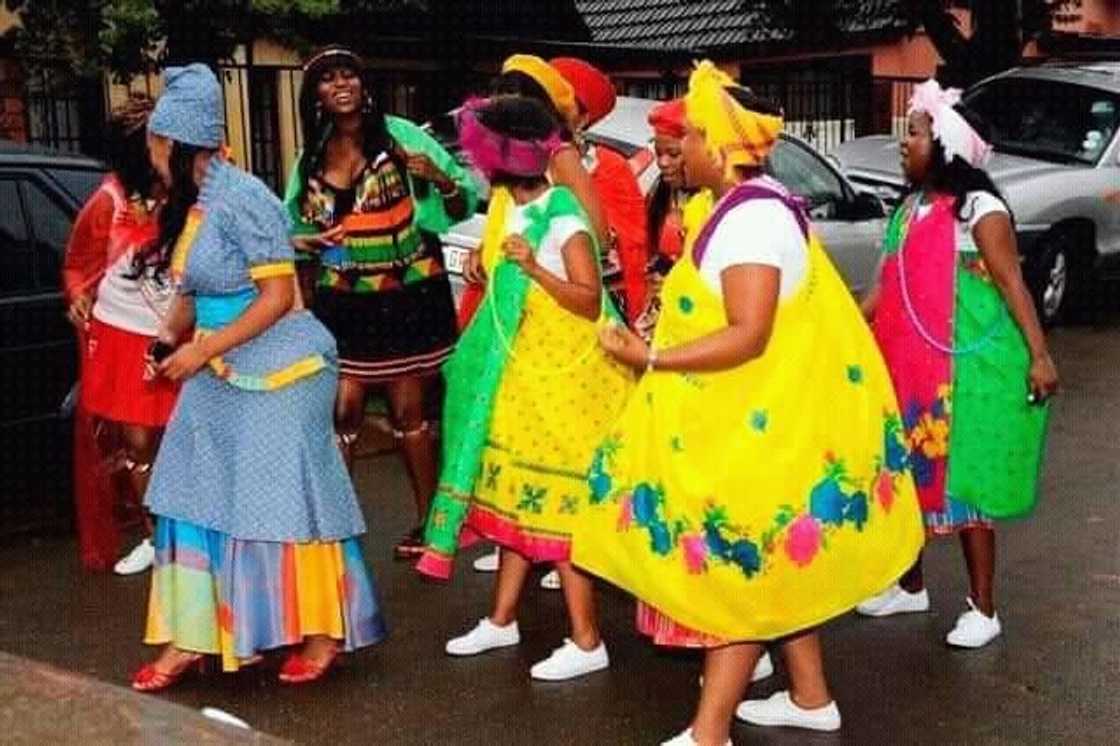Some Known Factual Statements About South African Culture Today
Some Known Factual Statements About South African Culture Today
Blog Article
The Definitive Guide for South African Culture Today
Table of ContentsSome Known Factual Statements About South African Culture Today Our South African Culture Today StatementsIndicators on South African Culture Today You Should KnowHow South African Culture Today can Save You Time, Stress, and Money.The South African Culture Today DiariesFacts About South African Culture Today Revealed
This adheres to with vocal singing and drum whipping. The groom and bride then consult with the elders and speak concerning the value of their union. An issue of importance in Zambian villages is the passing away of loved ones. All members of the village put money, effort and time with each other for the funeral of the deceased.Music and dance is an extremely crucial element of the Zambian culture. The numerous tribal systems have their very own dance forms; however, makishi is usual amongst all tribes.
South African Culture Today Things To Know Before You Buy
When it involves music, drums are used one of the most, with a variety of drumming ceremonies. In Zambia, bulk of the individuals are Christian; Protestant and Roman Catholic. There are small teams of Muslims and Hindus, with the rest complying with neighborhood native tribal beliefs.

South African heritage and society is immensely varied, and includes several groups of people that each have their own customs and beliefs. Having such a variety of individuals and cultures is what makes South Africa so unique. In truth feeling of the phrase, we are a rainbow nation.
Making it the 7th on the checklist of countries with the most Portuguese individuals in it outside of Portugal. Portuguese is not only a society, however it is also a language and a race. Portuguese people stem from the country of Portugal in Europe, however, due to Portugal (like several other nations in Europe) checking out the globe and dominating various other countries throughout the 15th 20th centuries, South Africa has what we call Portuguese South African's living in it.
A Biased View of South African Culture Today
Amongst the prominent features of the topography is a plateau that covers nearly 2 thirds of the facility of the country. The plateau complex increases towards the southeast, where it culminates in the Drakensberg array, part of an escarpment that separates the plateau from the coastal areas. The Drakensburg consists of Champagne Castle, the highest height in the nation.
The area north of the Witwatersrand, called the bushveld, inclines downward from eastern to west towards the Limpopo River, which forms the international border. The western section of the plateau, the middleveld, likewise comes down in the direction of the west and differs in altitude in between the highveld and bushveld. In between the Drakensburg and the eastern and southerly coast, the land comes down to the sea.
Nearer the shore there is a low-lying level called the eastern lowveld. Southwest of the plateau the nation comes to be progressively more arid, paving the way to the stony desert of the Great Karroo, bordered on the east by the lower, better sprinkled plateau of the Little Karroo. Dividing the dry southern inside from the sandy coastal of the southerly coast and West Cape is one more array, the Find Out More Langeberg.
Not known Facts About South African Culture Today
The nation's racially, ethnically, and politically separated history has generated nationwide and subnational symbols that still function as signs of the country, and others symbols that are approved only by certain teams. The monuments to white settler occupation and political supremacy, such as the Afrikaner Voortrekker ("pioneer") Monument in Pretoria and the Rhodes Monument honoring the British colonial empire home builder and Cape head of state Cecil Rhodes, remain sectarian signs.
The first modern-day occupants were the San ("bushman") hunter-gatherers and the Khoi ("Hottentot") peoples, that herded livestock (South African culture today). The San might have existed for hundreds of years and left evidence of their presence in hundreds of ancient cavern paintings ("rock art"). Bantu-speaking clans that were the forefathers of the Nguni (today's amaZulu, amaXhosa, amaSwazi, and vaTsonga peoples) and Tswana-Sotho language teams (today's Batswana and Southern and Northern Basotho) moved down from east Africa as very early as the fifteenth century

Both former republics of the Orange Free State and Transvaal (South African Republic) were established by Afrikaner inhabitants that beat and dispossessed the Basotho and Batswana. Lesotho would have been forcibly integrated right into the Orange Free State without the expansion of British protection in 1869. The supreme unification of the country arised from the South African Battle (18991902) in between the British and both Afrikaner republics, which decreased the country to spoil at the start of the twentieth century.
Afrikaners traditionally considered themselves the only true South Africans and, while approving complete citizenship to all locals of European descent, rejected that condition to individuals of shade until the autonomous change of 1994. British South Africans retain a sense of cultural and social connection to Great Britain without damaging their identity as South Africans.
Some Known Details About South African Culture Today
The variety and fragmentation within ethnic groups and the balance of tensions in between those groups throughout the twentieth century prevented interethnic civil problem. While intergroup tensions over sources, privileges, and political dominance continue to be, those disputes are as likely to match Zulu against Zulu as Zulu versus Xhosa or African versus Afrikaner.
From colonial India, British vendors and managers brought the rounded metal decorative roofings and slender shoelace work pillars that still exemplify the outdoor patios of cottages in the areas and cities throughout the country. Holy places add a crucial building facet also in the tiniest communities. In enhancement to the soaring steeples and timeless stonework of Afrikaans Dutch Reformed churches, Anglican churches, synagogues, mosques, and Hindu temples supply selection to the religious building scene.

Butchering and the brewing of typical grain beer are important in protecting the engagement and a good reputation of the forefathers that are considered the guardians of good luck, success, and health. Indian areas keep their indigenous cooking traditions and apply them on Islamic and Hindu ritual and ceremonial occasions. Afrikaners and Coloured people gather at weekends and special occasions at multifamily barbecues called braais, where community bonds are strengthened.
Because this was the primary financial enterprise of both black Africans and white homesteaders, problem in between those teams focused on the ownership of grazing land and livestock. In 1867, the largest diamond deposits on the planet were discovered at Kimberley in the west central location. my company The wealth from those fields helped finance the exploitation of the best gold reef in the More about the author world, which was uncovered on the Witwatersrand in 1886.
South African Culture Today - Truths
This caused misconceptions and intentional misstatement in the transactions of white inhabitants and federal government authorities with African principals throughout the colonial period (South African culture today). In the establishment of African books, some facets of public and primarily "tribal trust" land tenure were maintained, and even in white rural areas, types of communal tenure were still practiced in locations with African neighborhoods
After the autonomous improvement of 1994, programs for land restitution, redistribution, and reform were set up, however progression has actually been slow-moving. The white minority still manages eighty percent of the land. In the wake of agricultural land invasions in Zimbabwe, the Division of Land Affairs has actually pledged to speed up land redistribution.
Report this page